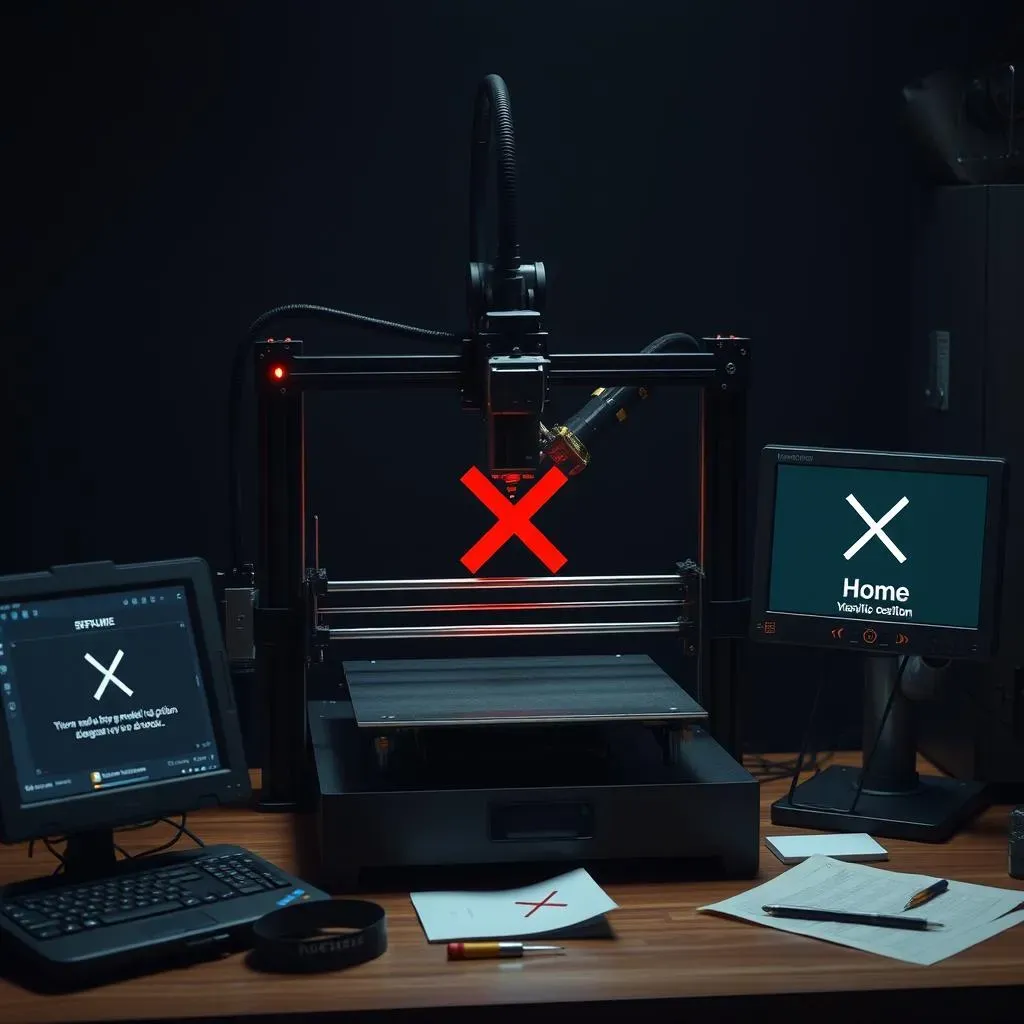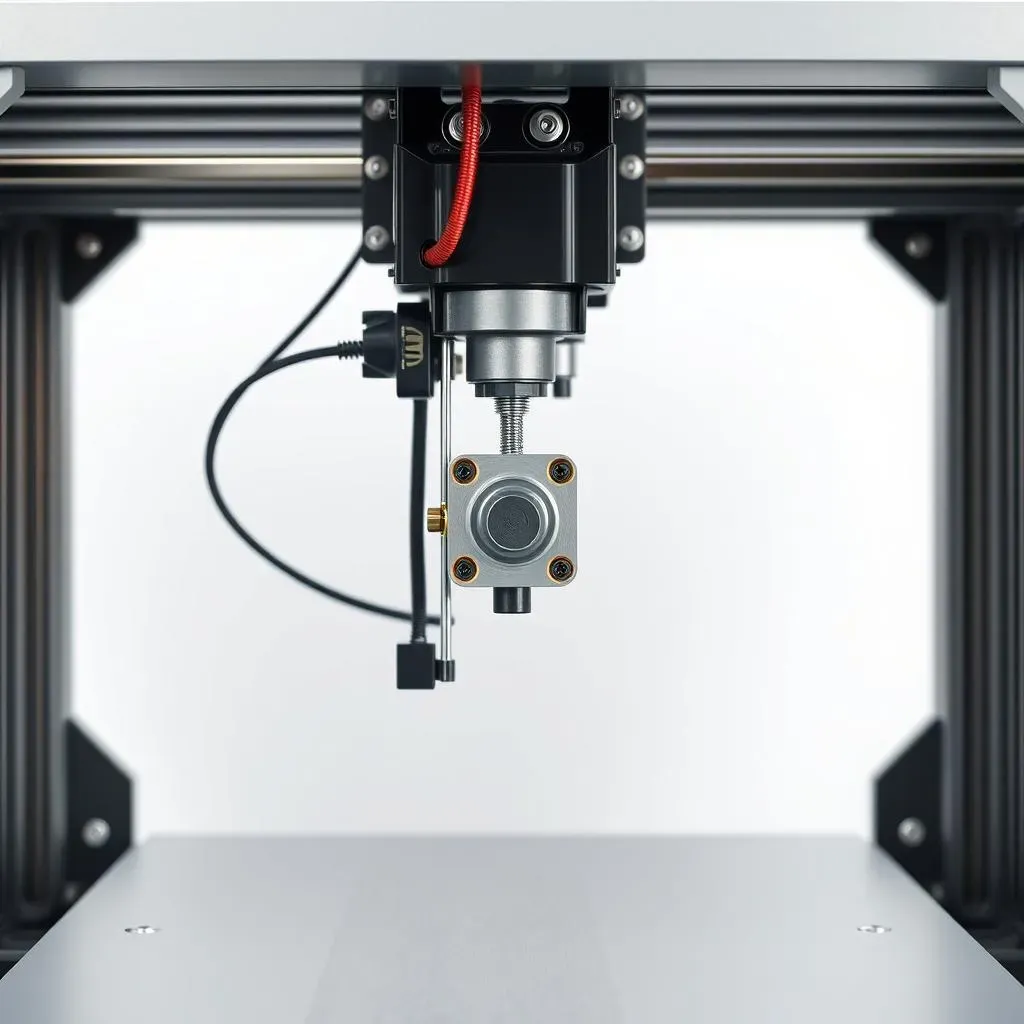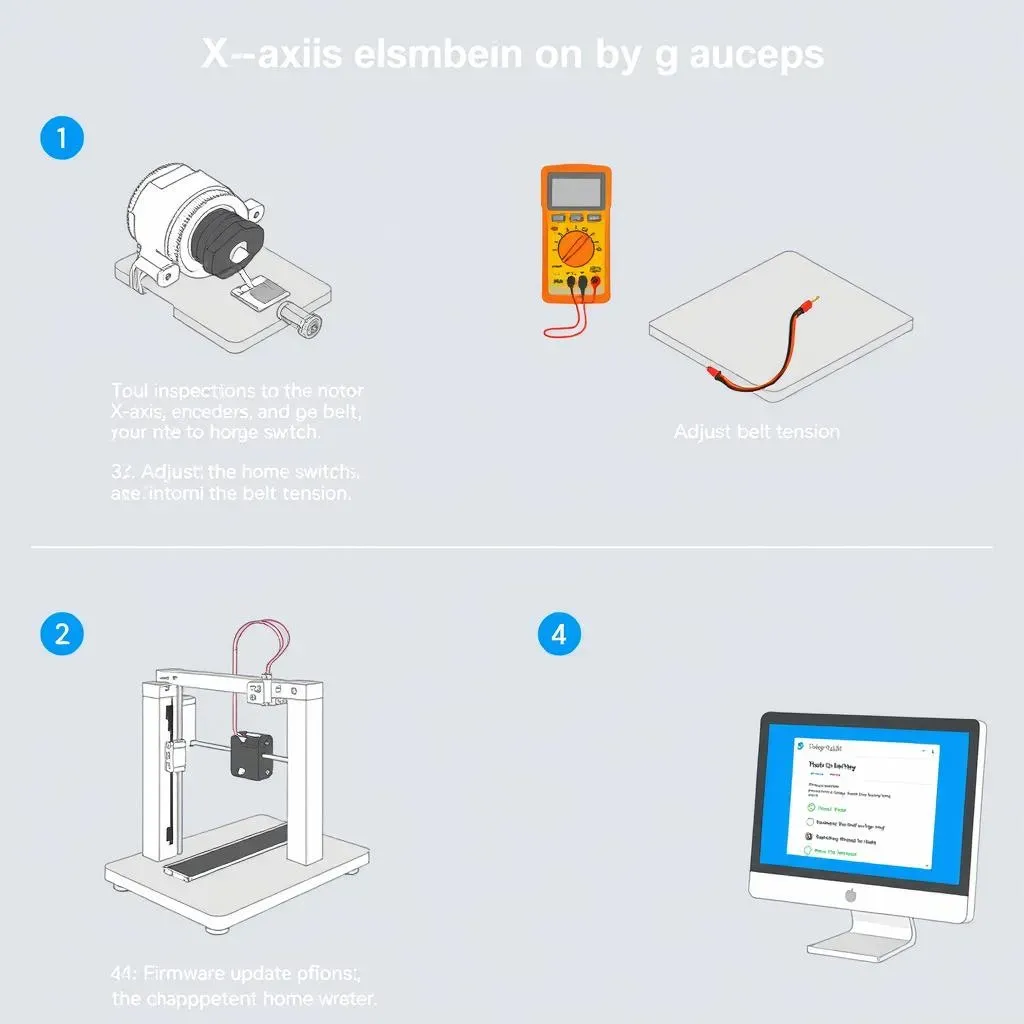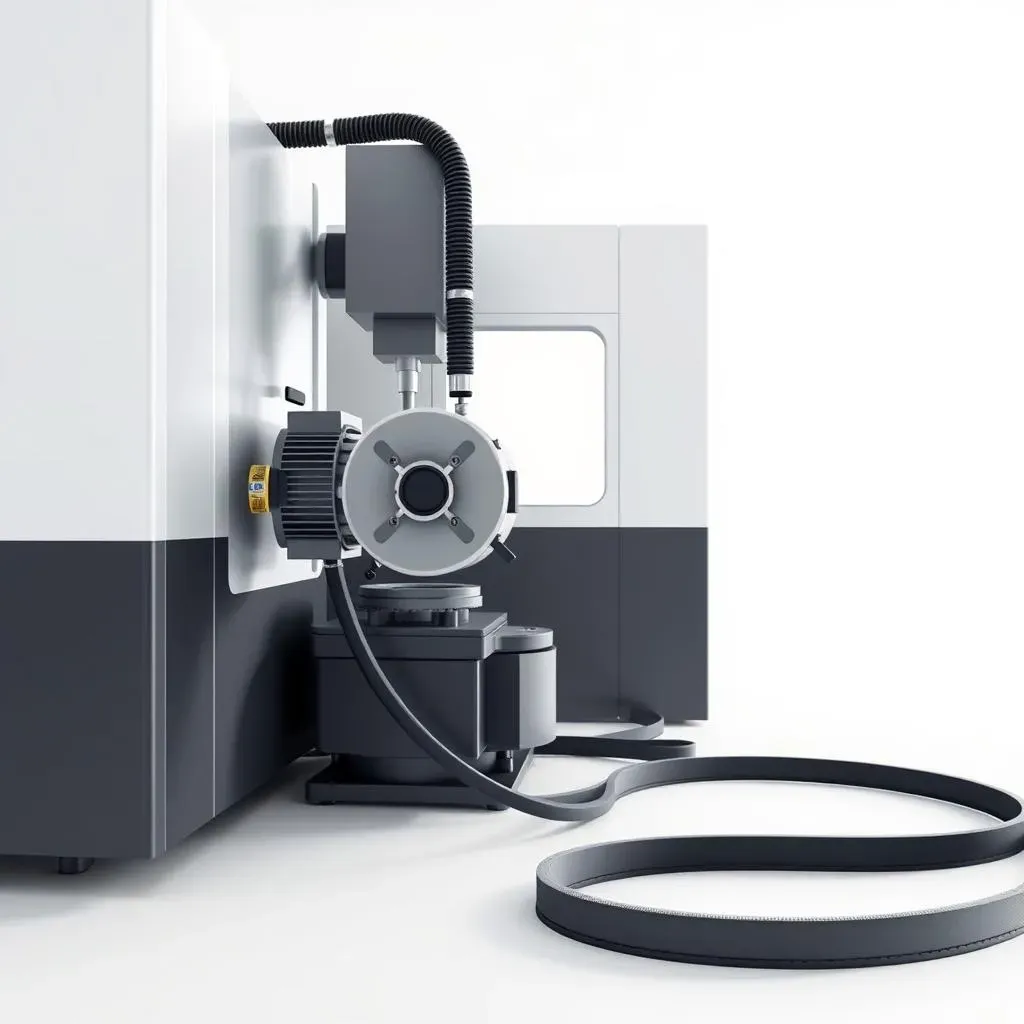Table of Contents
Ever stared at a machine flashing an "x homing failure" error, feeling utterly defeated? I have, more times than I'd like to admit. It's like your trusty robot suddenly decides it's forgotten where 'home' is, leaving you scratching your head. This isn't just frustrating; it can halt your entire operation, whether it's a vending machine refusing to vend or a 3D printer going rogue mid-print. This article isn't about fancy tech jargon; it’s about getting your hands dirty and fixing the problem. We'll break down the common causes of x homing failure, from sneaky motor issues to belt tension headaches. You'll also get clear, step-by-step solutions that even a beginner can follow. Plus, we'll talk about how to keep these pesky errors from popping up again. Consider this your survival guide to conquering the x homing failure, and getting your machines back on track. So, let’s get started and turn that frustrating error into a minor bump in the road.
Understanding the Dreaded X Homing Failure
Understanding the Dreaded X Homing Failure
What is X Homing Anyway?
Okay, so "x homing failure" might sound like something out of a sci-fi movie, but it's actually pretty simple. Think of it like this: your machine, whether it's a vending machine dispensing your favorite soda or a 3D printer crafting a miniature dragon, needs to know where its 'start' position is. This is its 'home.' The 'x' part just means we're talking about movement along the horizontal axis. When the machine tries to find this home position and fails, bam! You get the dreaded x homing failure. It's basically the machine saying, "I'm lost, I don't know where I am."
This isn't just a random glitch, it's the machine’s way of saying something is off. It could be a sensor not working right, a motor that's tired, or even a belt that's too loose. It's like when you're trying to find your keys and they're not where they should be – frustrating, right? The machine feels the same way, only it can't yell at you; it just throws an error. So, understanding what ‘homing’ means is the first step to fixing it. It's not some magical process, it's about a very specific movement to a very specific location. It's the machine's way to calibrate itself.
Why Should You Care?
Now, you might be thinking, "Okay, it's lost, so what?" Well, when a machine can’t find its home, it can’t do its job. A vending machine can't vend, a 3D printer can't print, and a CNC machine can't cut. It's like trying to play a video game without knowing where your character is on the map. You're stuck, and nothing works correctly. This error isn't just annoying; it stops things. It leads to downtime, lost productivity, and sometimes, a lot of frustration. The good news is that understanding the error puts you in control to fix it. No need to call for expensive repairs right away; you can often sort it out yourself with a little know-how.
I've personally dealt with this on my old 3D printer. I remember one time it failed during a big print, and I had to start all over again. It was incredibly annoying, but it also made me want to understand the mechanics behind it. So, if you’re reading this, it’s because you want to fix it, and I am here to help you, because I've been in your shoes. Don’t worry; it's not as scary as it sounds. We'll take it step by step, and you'll be able to tackle this error like a pro.
Error Type | Description | Impact |
|---|---|---|
X Homing Failure | Machine cannot find its home position on the X-axis. | Machine stops functioning, causing downtime. |
Y Homing Failure | Machine cannot find its home position on the Y-axis. | Machine stops functioning, causing downtime. |
Z Homing Failure | Machine cannot find its home position on the Z-axis. | Machine stops functioning, causing downtime. |
Common Causes of X Homing Errors
Common Causes of X Homing Errors
The Usual Suspects: Mechanical Issues
Okay, so your machine is throwing a fit and can't find its home. Let's look at the common culprits. First up: mechanical problems. Think of these as the physical roadblocks preventing your machine from doing its thing. A big one is a faulty motor encoder. This little guy is like the machine's GPS, tracking its movement. If it's broken or dirty, it can't tell the machine where it is, leading to the x homing failure. Another common issue is a sticky X home switch. This switch tells the machine when it's reached the home position. If it's stuck or not making good contact, the machine will keep trying to move past the home position, resulting in the error. It’s like trying to turn on a light switch that is stuck, it’s just not going to work.
Then there's the belt – the unsung hero that moves the axis. If it's too loose, it can slip, and the machine won't move accurately. If it's too tight, it might put too much strain on the motor. It needs to be just right, like Goldilocks and her porridge. It’s a delicate balance. These mechanical issues are often the most common reasons for X homing problems, and they’re usually the easiest to check. Before you start thinking about complex electrical problems, make sure these basics are covered. I always start here, it saves a lot of time and headache.
The Sneaky Culprits: Electrical and Software Problems
Alright, if everything looks good mechanically, let's move on to the sneaky stuff: electrical and software issues. Sometimes, the problem isn't something you can see. A bad connection in the wiring can cause the motor to receive incorrect signals, making it unable to move correctly. It’s like having a bad phone line, the message gets lost in translation. Also, sometimes the motor itself can be the problem. It could be worn out or simply not getting enough power. It's like trying to run a marathon when you haven't slept in days; you're just not going to perform well.
And don’t forget the software. Sometimes, the firmware – the machine’s operating system – can be buggy or outdated. It's like using an old version of your phone app; it might not work with the new features. If the firmware has a glitch, it may cause the machine to misinterpret the signals from the sensors. It's like having a map that has a mistake on it. Updating the firmware can sometimes resolve the issue. These electrical and software issues can be tricky to diagnose but they are not impossible. If you have a multimeter, you can test the wiring and motor. If you don’t, it might be time to get a little help from a professional.
Issue | Description | How to Check |
|---|---|---|
Faulty Motor Encoder | Encoder fails to track motor position | Visually inspect, swap with Y-axis encoder |
Sticky X Home Switch | Switch does not engage/disengage correctly | Check for obstructions, test continuity |
Loose/Tight Belt | Belt slips or strains the motor | Check tension, adjust as needed |
Bad Wiring | Loose or corroded connections | Inspect and test with a multimeter |
Outdated Firmware | Software glitches causing errors | Update to the latest version |
StepbyStep Solutions for X Homing Issues
StepbyStep Solutions for X Homing Issues
First Things First: The Visual Check
Alright, before we start swapping parts, let’s do a thorough visual inspection. It’s like being a detective; you have to look for clues. First, power down your machine. Safety first! Now, take a good look at the X-axis motor and the surrounding area. Is there any visible damage to the motor encoder? Are there any loose wires or connectors? Check the X home switch; is it bent, broken, or covered in gunk? Make sure it moves freely. Then, check the belt. Is it visibly loose or too tight? Does it look worn out or frayed? Sometimes, a simple visual check can reveal the problem without any further work. It’s like finding your keys in plain sight after searching everywhere; it happens.
I remember one time I spent hours troubleshooting my 3D printer only to realize that a small piece of plastic was blocking the home switch. A quick removal and I was back in business. It’s easy to overlook the simple things, so don’t rush this step. Take your time and look closely. Make sure you check all the screws, too! Sometimes, they get loose, and that can cause a headache. It’s like making sure you have all the right ingredients before you start cooking; you don’t want to get halfway through and realize you’re missing something.
Step | Action | What to Look For |
|---|---|---|
1 | Power Down | Ensure machine is completely off. |
2 | Visual Inspection | Damage, loose wires, obstructions, and belt condition. |
3 | Home Switch Check | Proper movement and condition. |
The Nitty-Gritty: Testing and Adjusting
Okay, so nothing obvious jumped out at you. Let's get into the nitty-gritty. If you suspect the motor encoder, here's a neat trick: swap it with the Y-axis motor encoder. They’re usually the same. If the error moves to the Y-axis, you know the encoder is the problem. If the error persists on the X-axis, then it’s not the encoder. Next, if you suspect the switch, you can test it with a multimeter to check if it’s working correctly. Set the multimeter to continuity mode and see if it registers when the switch is activated. If it doesn’t, the switch is likely faulty. Finally, adjust the belt tension. There’s no magic number here; it’s about finding the right balance. It shouldn’t be too loose or too tight, just snug enough to move the axis smoothly.
I’ve spent so much time adjusting belts, that I almost feel like a belt whisperer. It’s a bit of trial and error, but you’ll get the hang of it. If you have to replace parts, make sure you buy the correct ones. Using the wrong parts can cause more problems. It’s like trying to put a square peg in a round hole; it’s just not going to work. And remember, take pictures as you go, so you can put everything back together correctly. It’s like leaving breadcrumbs so you don’t get lost in the forest of wires and screws.
Software Solutions: Firmware Updates
If none of the above worked, it might be time to look at the software side of things. Check if there's a firmware update available for your machine. Outdated firmware can cause all sorts of weird issues, including x homing failure. It’s like using an old map that doesn’t show the new roads; you’re just going to get lost. Updating the firmware is usually pretty straightforward; you just need to download the file from the manufacturer’s website and follow the instructions. I've seen firmware updates fix many problems. It's like a software patch that fixes any bugs. So, if you haven’t updated your machine’s firmware in a while, it’s worth a shot.
Now, if you’ve tried all of these steps and you’re still having problems, it might be time to call in the pros. Sometimes, it's better to admit defeat and get help from someone who knows the ins and outs of your machine. It’s like knowing when to ask for directions; sometimes, it’s the best way to get where you need to go. Don't feel bad if you have to call for help; that’s what they’re there for. You’ve done your best, and sometimes that’s all you can do. The important thing is that you’ve learned a lot about your machine in the process. So, go forth and conquer that x homing failure!
Preventing Future X Homing Failures
Preventing Future X Homing Failures
Regular Maintenance: Your Machine's Best Friend
Okay, so you've wrestled with the x homing failure and got your machine back up and running. Now, let's talk about keeping it that way. The secret? Regular maintenance. Think of it like taking your car for an oil change; it keeps everything running smoothly. For your machine, this means regularly checking the motor encoder for dirt or damage. Give it a gentle clean with a soft cloth. Also, keep an eye on the X home switch. Make sure it's clean, moves freely, and isn't obstructed. If you see any gunk or debris, clean it off. It's like brushing your teeth; it prevents problems down the road.
Don’t forget about the belt! Check the tension regularly. If it’s too loose or too tight, adjust it. A well-maintained machine is a happy machine, and a happy machine doesn’t throw x homing errors at you. I like to set a schedule for maintenance, like every month or every three months. It depends on how much you use your machine. Setting a schedule will help you to remember to do it. It’s like putting reminders on your phone to take out the trash; it helps you stay on top of things.
Maintenance Task | Frequency | Why It Matters |
|---|---|---|
Clean Motor Encoder | Monthly | Ensures accurate position tracking |
Check X Home Switch | Monthly | Prevents sticking or obstruction |
Adjust Belt Tension | Every 3 Months | Maintains smooth movement |
Smart Practices: Avoiding Problems Before They Start
Besides regular maintenance, there are some smart practices that can help you avoid future x homing failures. First, make sure your machine is in a clean environment. Dust and debris are the enemies of precision machines. It’s like wearing clean clothes; it keeps everything running smoothly. Also, don’t force your machine to work harder than it should. If it’s struggling to move the axis, stop and check for obstructions. It’s like trying to lift something too heavy; you could hurt yourself. Be gentle and treat your machine with care. It’s not a robot slave; it's a precision tool.
Another good tip is to keep your firmware up to date. Manufacturers often release updates that fix bugs and improve performance. It’s like updating your phone; it makes everything run better. Finally, always follow the manufacturer’s instructions. They know their machines best. Don’t try to do something the machine wasn’t designed for. It’s like trying to fly a car; it’s not going to work. If you follow these smart practices, you can reduce the chances of experiencing x homing failure again. It’s like taking care of your health; it prevents problems before they happen.
- Keep your machine in a clean environment.
- Avoid forcing the machine to work beyond its limits.
- Regularly update the machine's firmware.
- Follow the manufacturer's instructions.